Everyone who has ever used a sleeping bag is aware of the fact that they make your nights warm and cozy, thus, making your camping trip feel more pleasant. In certain weather conditions, sleeping bags are an inevitable and necessary addition to your backpacking or camping gear. Sometimes, we are only carrying them for their cozy features.
However, after a while of using it, you must clean it somehow and this is certainly not an easy task. Most sleeping bags are not machine washable, which makes it very hard for some users to maintain. Nevertheless, in this article, we will advise you on how to clean a sleeping bag, while maintaining its warming features and prolonging its life span.
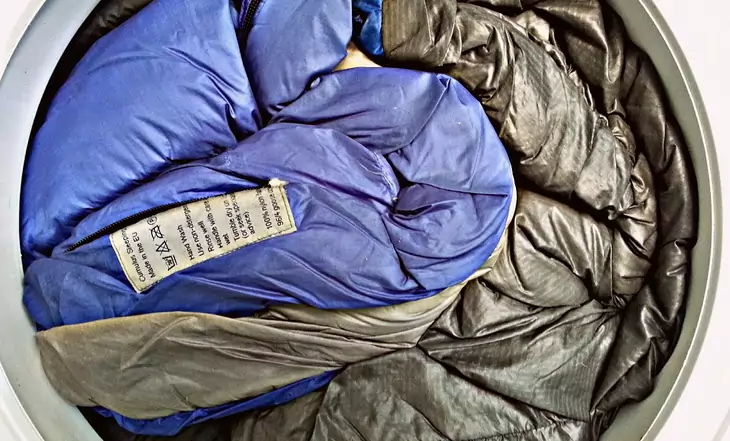
The first thing you need to know before cleaning your bag is what kind of material is it made of. If you don’t already own a sleeping bag, it would be good that you read this article before the purchase of a sleeping bag. After all, maintaining and cleaning a sleeping bag should definitely be considered as an important feature. The fact remains that synthetic sleeping bags are much easier to clean than down sleeping bags, but we have included instructions for each type of sleeping bag just in case.
Advices for cleaning your sleeping bag less frequently
Regardless of the material your sleeping bag is made of, it needs to be cleaned from time to time. However, if you try to keep it dry and clean during and after every camping trip you are taking, the cleanliness will last longer and you wouldn’t have to subject yourself to this process so often.
Clean body and clean clothes
After a day of hiking, backpacking or even hanging out in the sun with your friends you are not clean. Even though you might not feel sweaty, your body is eliminating the oils and dirt from your body through the pores, thus making your body and your clothes smell a bit. For this reason, if you have a water source nearby, don’t hesitate to use it before going to sleep. You will do your body a favor as well as your sleeping bag. Also make sure you change your clothes into pajamas or clean ones that you are going to use only for sleeping. Even though this sounds a bit hard to carry on your back, if it is possible, it is recommended.
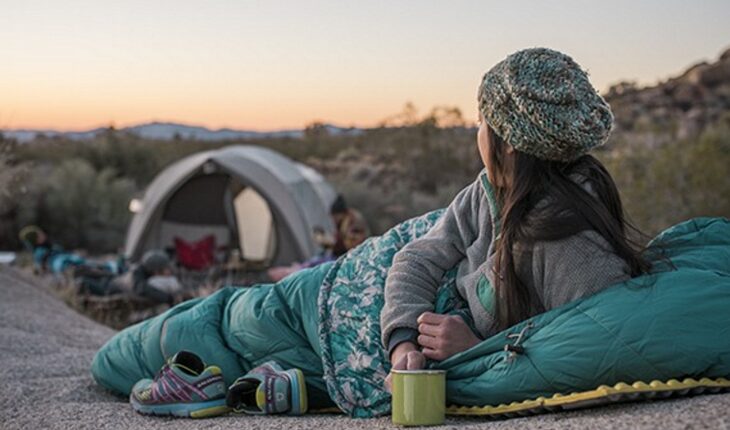
Another good idea is not to apply sunscreen or any other body milk before getting into the bag. Even though at the time it might smell very good and even help deepen your sleep, these chemicals are known to deteriorate over time and they are causing your bag to smell after a few days or weeks, depending on the product.
An especially important advice considering your clothes, is to never sleep in the clothes that you cook. Although this is important for the cleanliness of your sleeping bag, it is vital to apply this if you don’t want a bear visitor in the middle of the night smelling you and maybe trying something more.
Always use a sleeping pad
A sleeping pad or some other type of isolation could go a long way if you want to clean your sleeping bag less frequently. Some grounds could be muddy or even a grass covered ground could get your bag dirty enough so that you have to clean it.

Sleeping pads are also good isolators; this means that you could get a double usage with one item. Read our reviews of the best sleeping pads to give you more option on what to choose from.
A bag liner
Bag liners are especially recommended for down bags. As you will see later in this article, down bags are advised to be cleaned as rarely as possible. For this reason, a barrier between your body and the sleeping bag could do the trick. It will absorb the dirt coming from your clothes and you could only wash the liner instead of the whole bag. Sleeping bag liners are even a better option than carrying extra clothes with you since they are extremely lightweight and very suitable for backpacking. They also have an additional function of adding a few degrees to your body temperature.
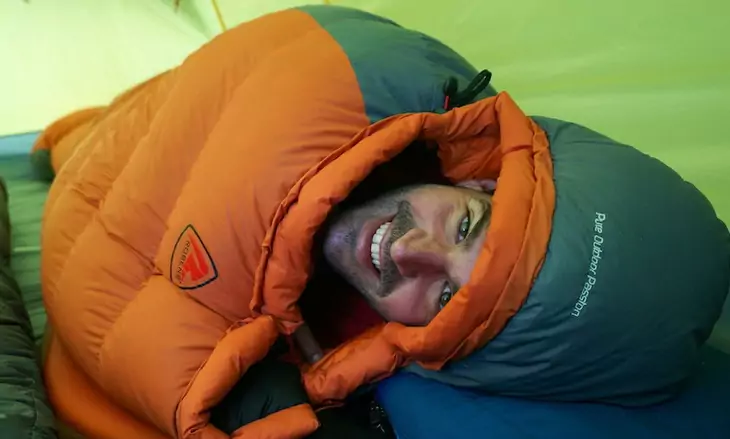
Sleeping bag liners are mostly used with down filled sleeping bags. If you have already purchased a down sleeping bag, make sure you also get a bag liner. There are different types of bag liners you could choose from. The silk and cotton sleeping bag liners are the most common and best liners available on the market. Here’s our article containing the list of the best sleeping bag liners, do check it out.
Cover your bag when it is not used or air it out
Leaving your sleeping bag directly on the sunlight could damage the fabric. It is also recommended to do so because leaving it uncovered will absorb dust and you will have to clean it more frequently.

The best thing is to air it out, but if it is too much work for you, covering it will do just fine.
How to clean your sleeping bag
The care of the sleeping bag mainly depends on the material your bag is made of. If your bag is synthetic, you are in luck, cleaning it will require much less time and effort. Down bags on the other side require much more attention and cleaning instructions. If you feel like you are not up to the task, there are professional services which could take care of it for you.
Spot cleaning
Before proceeding to the full cleaning instructions of your sleeping bag consider spot cleaning it. If you feel like your whole bag is not for washing, but there are certain stains which you prefer not to exist, try the following procedure. For cleaning the shell of your sleeping bag you should first make a paste. The paste could be made out of a non detergent soap or baking soda based pastes. When applying the paste on the outer shell, make sure you stay away from the insulation and be careful not to wet the inside fill.
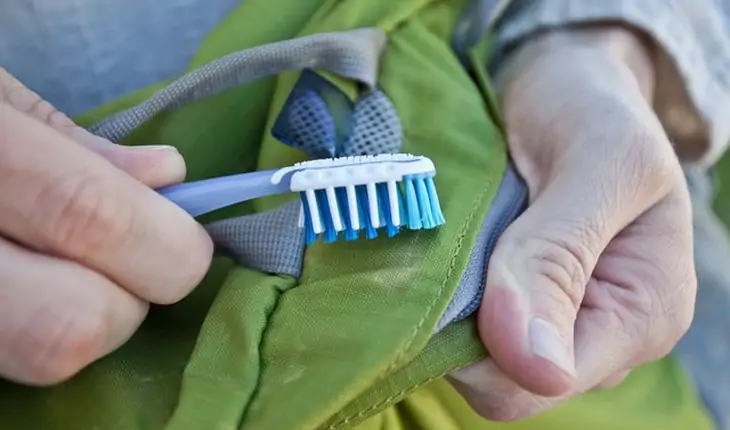
The outer shell which is made from non insulating material require less frequent washing since they have less ability to absorb the sweat and dirt. Most sleeping bags could be spot cleaned only, most of the times, and they could only be fully cleaned and completely washed after the end of the season.
Washing a sleeping bag, full instructions
If after doing so, your bag still smells weird and it has also become darker in color, it should probably use a full washing. The first thing you should do is choose a place where you will do the washing. It must be washed in a tub or something similar which could fit the whole bag in a horizontal position. If you are washing a synthetic bag, this is optional. However, if you are washing a down bag, the horizontal position is a must.
It allows the feathers inside to align properly. After filling the tub with cool water, add the cleaner which you are planning on using. The cleaner should be gentle, preferably a non detergent soap. If you happen to put too much cleaner inside, cleaning the bag would be even harder since it would become harder for it to be rinsed out and thoroughly cleaned.
After that, you should rub the dirtiest parts with your hands or with a brush. Whatever you do, don’t change the horizontal position of a down bag since you may reorder the filling and create thermal holes. After thoroughly rinsing out the sleeping bag, drain the water from the tub and press out the water that remains inside the tub. This way, the bag will be able to dry out faster and more efficiently. In order for this to happen, make sure you squeeze the excess water from the sleeping bag as much as you can.
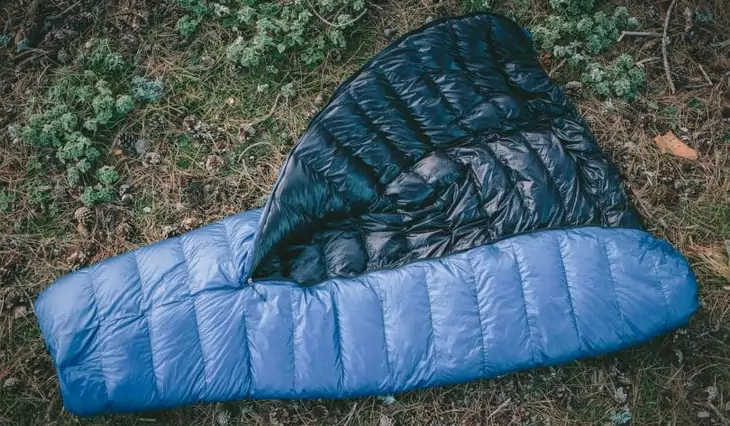
When transferring it to the drying place, gather it up and don’t squeeze it into a ball. This is especially important if the sleeping bag is made from a down filling. If it is synthetic, feel free to squeeze it into a ball before transferring it to the dryer. When transferring, make sure you avoid ripping and straining the seams. This is very important for keeping the thermal properties of the sleeping bag. If the sleeping bag is very filthy and it has a specific smell, make sure you leave it soaking in water for 20 minutes before draining it out. This way, the bag will be able to absorb the smell of the cleaner and it will clean more efficiently. Repeat the rinsing process several times if the sleeping bag requires a heavy washing.

If you are planning on using a dryer it should be large enough so that the sleeping bag doesn’t stay rolled up in a ball. If it dries out this way, there is also a possibility that the bag loses its thermal properties. However, it is best that you choose not to use a dryer and dry your sleeping bag on a flat surface. It is best that the surface is outside where there is a lot of aeration. If you are planning on drying it outside, it is best that you choose a sunny area with a partly shady spot because if it is too sunny it could change the color of the bag. And if it is too shady it could smell moldy if it is dried for a longer period of time.
Machine washing your sleeping bag
Even though machine washing your sleeping bag is not recommended, if you are in a hurry, you could manage to do so. This is only recommended if your sleeping bag is made from synthetic blend. If you choose to clean your sleeping bag in a washing machine, make sure there is enough place for the bag to tumble. This is necessary in order for the bag to be thoroughly cleaned.
If you choose to go with this option, keep in mind that the gentle cycle is the most convenient option. A gentle soap cleaner is also recommended. An interesting note is that adding a towel or some other cotton material would help balance the spinning cycle of the machine and your sleeping bag would be better cleaned. It is also recommended that you rinse your sleeping bag twice in order to remove all the soap residues from the bag. This way, you will avoid all the soap white spots which would potentially occur if you fail to do so.
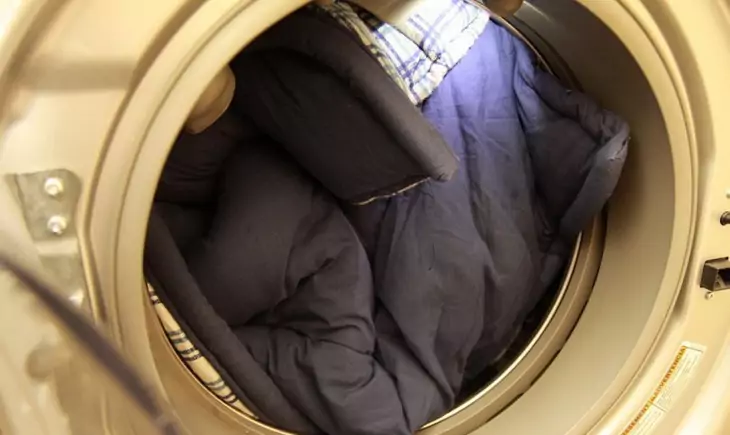
Important note: It is highly recommended that you avoid twisting your sleeping bag. By doing so, you are risking that lumps are created in the filling part of the bag. If you are intending on machine washing your sleeping bag, it is of vital importance that you check the label if this is recommended. If your sleeping bag is not for machine washing, by all means avoid this procedure. For some cleaning tips on how to properly wash your sleeping bag, see our article on this topic for more information.
Drying a sleeping bag
Drying your sleeping bag is a process which goes together with the cleaning process. It is equally important and if you get either of them wrong your sleeping bag would be destroyed. The sleeping bags which are made out of a synthetic blend could be hanged upside down on a washing line. However, the down sleeping bags are not recommended to be dried this way as they could create lumps. It is interesting to note that even though you wash a sleeping bag properly, by drying it the wrong way, there is a possibility that it loses part of its thermal properties.
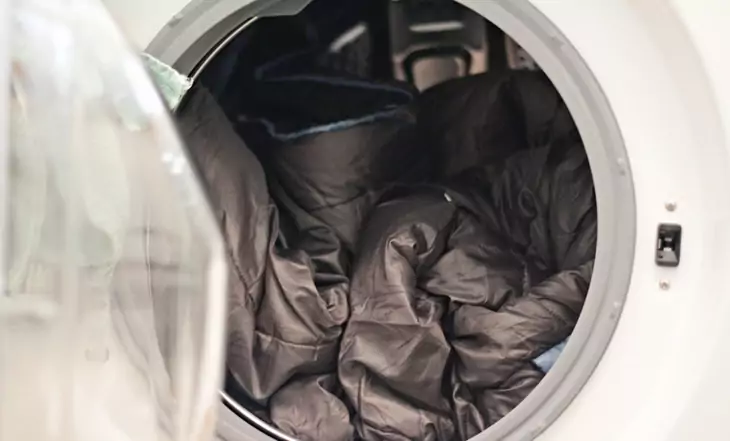
The other option at your disposal, is that you dry your sleeping bag by popping it into a large drier on a very low heat. This is also recommended for synthetic bags only. The very low heat is an important recommendation since the higher temperatures are known to melt some of the synthetic fibers, thus lowering the quality of the sleeping bag itself. This could cause the bag to lose some of its features, such as comfortableness.
Difference between synthetic and down sleeping bag washing
Since they are made of a completely different type of materials, they have various differences in their cleaning processes. The main difference is that down bags are almost never allowed to wash in a machine. Synthetic ones however are sometimes recommended to be machine washed. Other than this important pointer, there is also the dry cleaning recommendation.
The synthetic sleeping bags are not recommended to be dry cleaned since they are producing dangerous fumes during this process. This process could also cause the synthetic sleeping bag to age prematurely. Down sleeping bags, however, are made from completely natural materials, feathers and they are safe to be dry cleaned. Another very important difference is that synthetic sleeping bags could be washed in a warm water of up to 30 degrees. Down sleeping bags, however, are recommended to be cold washed only.
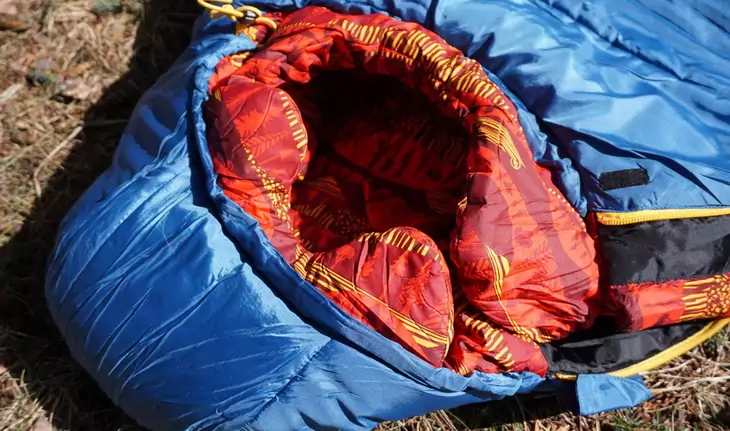
Also, you should soak the synthetic sleeping bag in the tub for up to 4 hours, depending on the synthetic blend it is made of. Down bags, however, should be washed as quickly as possible with cold water and as little massaging the bag as possible. Every draining, massaging, lifting or any kind of handling it, while it is soaked is increasing the possibility of damaging it. They are very delicate for maintenance and if possible, it is always better to leave this job to a professional. The best you can do if you own a down sleeping bag, is to focus on the “Maintaining it Clean” part of this article.
The reason for doing so is because the construction of the down sleeping bags is very specific and it is made with an internal baffle construction. This means that your down bag contains mesh panels that put the down filling in specific areas in order to ensure that the warmth is reordered throughout the bag and there is enough loft and insulation inside.
Wetting it could cause these baffles to get damaged and your down sleeping bag will become just a low quality sleeping bag. Keeping your down bag dry is also important while you are camping or backpacking. Wetting it out on the field could cause the same consequences which would affect the insulation and reduce its warming and lofting properties. Do check our piece citing the differences between synthetic and down sleeping bags for your guidance.
FINAL THOUGHTS ON THIS TOPIC
As you can see from the recommendations above, the synthetic sleeping bags are much easier to maintain than the down filled ones. Even though this pushes the reader into buying a synthetic sleeping bag, the down filled bags have many advantages as well. However, maintaining them is not one of these advantages. With down sleeping bags it is always recommended that you use a sleeping bag liner.
In case you have already tried washing your sleeping bag in a washing machine, or perhaps you have not dried it properly, you should still continue to use these instructions. Even though after only one improper cleaning of a sleeping bag, its warming features might be partly lost, it is still advisable to use these bag maintaining pointers. However, if you continue to clean your sleeping bag the wrong way, you might shorten its life span and you might have to look for a new sleeping bag a lot earlier than thought.
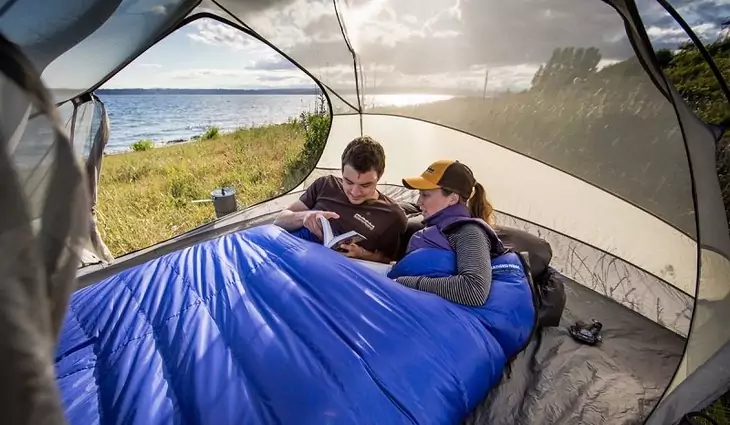
Nevertheless, by using these directions for cleaning a sleeping bag, it will keep you warm on many backpacking and camping trips to come. For this reason, make sure you read the article thoroughly and as always, if you have any questions or remarks, feel free to leave us a comment in the comment section below. Share with us your methods of cleaning a sleeping bag!

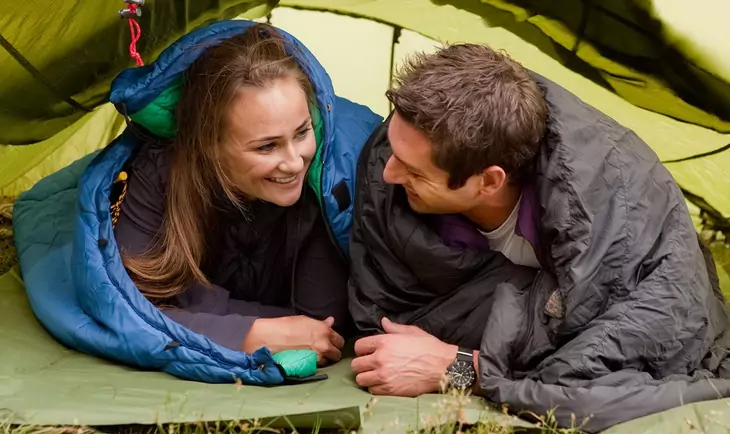


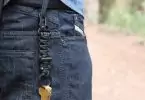
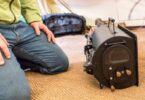


Keeping your sleeping bag clean has noticeable sanitary benefits, but it also helps extend the life of your bag. So, make sure you learn the skill.
The more you care for the bag’s fabric and filling, the longer the sleeping bag will last, and the more outdoors you will get to enjoy.